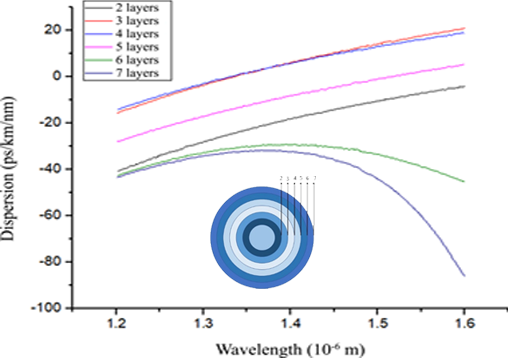Core multi-layer dispersion on single-mode optical fiber
DOI:
https://doi.org/10.59190/stc.v3i3.235Keywords:
Communication, Electromagnetic Waves, Multi-Layer, Single-Mode Fiber, Zero DispersionAbstract
Optical technology has experienced extraordinary developments in recent years and the development of optical fibers continues to be carried out for various applications, namely optical sensors, long-distance communications, and health monitoring so that they can be applied in monitoring high temperatures in petroleum plants. Optical fiber has properties that cannot interfere with electromagnetic waves, which is an advantage compared to conventional cables besides optical fibers are able to transmit data quickly and reach very far across continents. However, the signal in the optical fiber that is carried in the form of pulses can experience widening, this widening is a result of changes in the refractive index, constituent materials, and losses due to fiber optic connection which will decrease the quality of the received signal. One way to reduce the pulse widening in a single-mode optical fiber is to split the fiber core into several layers to obtain zero dispersion in the single-mode optical fiber. Another thing is that we can influence the effect of the inner layer of the fiber core on the desired zero dispersion. After designing the optical core by making several layers, it was found that the dispersion was not found in the 6 and 7 core layers while the fibers with layers 2, 3, 4, and 5 had different wavelengths for zero dispersion. Furthermore, the effective area or area that is passed by the optical signal and the largest fiber mode diameter is obtained on 3-layer fibers with a value of 230.0454 mm2 and 17.1144 mm each seen from the delay of layer groups 2, 5, 6, and 7 experiencing a group decline for each wavelength while fiber With layers 3 and 4 experiencing an increase in group delay from the experimental data it was found that cores with 6 and 7 layers would not find the desired zero dispersion while optical fibers with the best layers transmit signals were cores with 3 layers.

Downloads
Published
How to Cite
Issue
Section
License
Copyright (c) 2023 Khaikal Ramadhan, Dedi Irawan, Preecha Yupapin

This work is licensed under a Creative Commons Attribution 4.0 International License.










